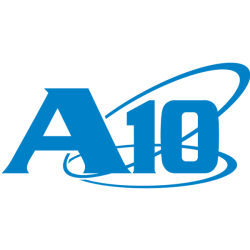ATEN

A10 Networks, Inc.
ATEN
(2.2)18,32 USD
11.09% ROA
23.31% ROE
24.53x PER
1.062.194.518,00 USD
6.68% DER
1.67% Yield
19.29% NPM
A10 Networks, Inc. Stock Analysis
A10 Networks, Inc. Fundamental Analysis
Fundamental analysis in stock investing is like studying the foundation of a house before buying it. It involves looking at a company's financial health, like its earnings, assets, and debts, to determine if it's a good investment based on its fundamental strength and potential for growth.
| # | Analysis | Rating |
|---|---|---|
| 1 |
ROE
ROE surpassing expectations (25.4%) highlights strong profitability and efficient use of shareholders' equity, making it an appealing investment prospect. |
|
| 2 |
ROA
The stock's ability to make a lot of money from its assets shows that it is very profitable, making it a good choice for people who want to invest and make a lot of money. |
|
| 3 |
DER
The stock has a low debt to equity ratio (3%), which means it has a small amount of debt compared to the ownership it holds |
|
| 4 |
Dividend Growth
With a history of consistent dividend increases over the last three years, the company has proven to be a reliable choice for investors seeking reliable income. |
|
| 5 |
Dividend
The company's consistent dividend payments over the past three years indicate a strong commitment to delivering returns to investors. |
|
| 6 |
Buffet Intrinsic Value
Warren Buffett's formula suggests that the company's stock is undervalued (97), making it an appealing investment prospect with its intrinsic value surpassing the current market price. |
|
| 7 |
PBV
The stock's elevated P/BV ratio (4.59x) raises concerns about its overvaluation, making it an imprudent choice for investors seeking value. |
|
| 8 |
Revenue Growth
Company's revenue has remained stagnant over the past three years, indicating a lack of growth and making it a less favorable option. |
|
| 9 |
Net Profit Growth
Despite the passage of five years, this company's net profit has not shown any improvement, highlighting a lack of growth and making it a less appealing investment prospect. |
|
| 10 |
Assets Growth
Company's revenue has stayed stagnant, showing no signs of improvement and making it a less favorable choice. |
|
| 11 |
Graham Number
The company's Graham number suggests that its stock price is overestimated, implying that it may not be a promising investment opportunity. |
A10 Networks, Inc. Technical Analysis
Technical analysis in stock investing is like reading the patterns on a weather map to predict future weather conditions. It involves studying past stock price movements and trading volumes to make predictions about where a stock's price might go next, without necessarily looking at the company's financial health.
| # | Analysis | Recommendation |
|---|---|---|
| 1 | Awesome Oscillator | Hold |
| 2 | MACD | Buy |
| 3 | RSI | Hold |
| 4 | Stoch RSI | Sell |
A10 Networks, Inc. Price Chart
Financial Statements
Financial statements are like report cards for companies. They show how much money a company makes (income statement), what it owns and owes (balance sheet), and where it spends its money (cash flow statement), helping stock investors understand if a company is healthy and worth investing in.
Income Statements
An income statement for a company is like a scoreboard for its profits and losses. It shows how much money the company made (revenue) and how much it spent to make that money (expenses), helping stock investors see if a company is making a profit or not.
Revenue in stock investing is the total amount of money a company earns from its sales, and it's a key factor that investors consider to assess a company's financial performance and growth potential.
| Year | Revenue | Growth |
|---|---|---|
| 2011 | 91.278.000 | |
| 2012 | 120.066.000 | 23.98% |
| 2013 | 141.738.000 | 15.29% |
| 2014 | 179.507.000 | 21.04% |
| 2015 | 198.955.000 | 9.78% |
| 2016 | 230.003.000 | 13.5% |
| 2017 | 235.429.000 | 2.3% |
| 2018 | 232.223.000 | -1.38% |
| 2019 | 212.628.000 | -9.22% |
| 2020 | 225.527.000 | 5.72% |
| 2021 | 250.042.000 | 9.8% |
| 2022 | 280.338.000 | 10.81% |
| 2023 | 231.100.000 | -21.31% |
| 2023 | 251.700.000 | 8.18% |
| 2024 | 240.384.000 | -4.71% |
Research and Development Expenses are the costs a company incurs to create and improve its products or services, which can be important for investors to evaluate a company's innovation and potential for future growth.
| Year | Research and Development Expenses | Growth |
|---|---|---|
| 2011 | 16.652.000 | |
| 2012 | 25.513.000 | 34.73% |
| 2013 | 33.348.000 | 23.49% |
| 2014 | 49.903.000 | 33.17% |
| 2015 | 54.843.000 | 9.01% |
| 2016 | 60.700.000 | 9.65% |
| 2017 | 62.991.000 | 3.64% |
| 2018 | 65.157.000 | 3.32% |
| 2019 | 61.824.000 | -5.39% |
| 2020 | 58.063.000 | -6.48% |
| 2021 | 54.077.000 | -7.37% |
| 2022 | 58.398.000 | 7.4% |
| 2023 | 70.480.000 | 17.14% |
| 2023 | 55.229.000 | -27.61% |
| 2024 | 58.948.000 | 6.31% |
General and Administrative Expenses are the costs a company incurs to run its day-to-day operations, such as office rent, salaries, and utilities, which investors consider to understand a company's overall efficiency and management effectiveness.
| Year | General and Administrative Expenses | Growth |
|---|---|---|
| 2011 | 3.110.000 | |
| 2012 | 10.225.000 | 69.58% |
| 2013 | 15.556.000 | 34.27% |
| 2014 | 22.938.000 | 32.18% |
| 2015 | 27.055.000 | 15.22% |
| 2016 | 27.063.000 | 0.03% |
| 2017 | 28.132.000 | 3.8% |
| 2018 | 39.635.000 | 29.02% |
| 2019 | 23.704.000 | -67.21% |
| 2020 | 21.851.000 | -8.48% |
| 2021 | 23.421.000 | 6.7% |
| 2022 | 23.518.000 | 0.41% |
| 2023 | 22.452.000 | -4.75% |
| 2023 | 23.885.000 | 6% |
| 2024 | 23.808.000 | -0.32% |
EBITDA stands for Earnings Before Interest, Taxes, Depreciation, and Amortization. It is a measure that helps stock investors analyze a company's profitability by looking at its earnings without considering certain expenses. This helps to get a clearer picture of the company's financial performance and its ability to generate cash flow.
| Year | EBITDA | Growth |
|---|---|---|
| 2011 | 11.812.000 | |
| 2012 | -83.963.000 | 114.07% |
| 2013 | -17.881.000 | -369.57% |
| 2014 | -22.063.999 | 18.96% |
| 2015 | -30.062.000 | 26.61% |
| 2016 | -12.943.000 | -132.26% |
| 2017 | -872.000 | -1384.29% |
| 2018 | -18.606.000 | 95.31% |
| 2019 | -9.775.000 | -90.34% |
| 2020 | 24.740.000 | 139.51% |
| 2021 | 35.142.000 | 29.6% |
| 2022 | 60.460.000 | 41.88% |
| 2023 | 18.988.000 | -218.41% |
| 2023 | 47.994.000 | 60.44% |
| 2024 | 42.924.000 | -11.81% |
Gross profit is the money a company makes from selling its products or services after subtracting the cost of producing or providing them, and it is an important measure for investors to understand a company's profitability.
| Year | Gross Profit | Growth |
|---|---|---|
| 2011 | 72.803.000 | |
| 2012 | 95.556.000 | 23.81% |
| 2013 | 108.342.000 | 11.8% |
| 2014 | 136.570.000 | 20.67% |
| 2015 | 150.187.000 | 9.07% |
| 2016 | 175.093.000 | 14.22% |
| 2017 | 182.111.000 | 3.85% |
| 2018 | 180.327.000 | -0.99% |
| 2019 | 163.747.000 | -10.13% |
| 2020 | 175.379.000 | 6.63% |
| 2021 | 196.537.000 | 10.77% |
| 2022 | 223.506.000 | 12.07% |
| 2023 | 187.064.000 | -19.48% |
| 2023 | 203.738.000 | 8.18% |
| 2024 | 192.232.000 | -5.99% |
Net income in stock investing is like the money a company actually gets to keep as profit after paying all its bills, and it's an important measure to understand how well a company is doing financially.
| Year | Net Profit | Growth |
|---|---|---|
| 2011 | 7.304.000 | |
| 2012 | -90.150.000 | 108.1% |
| 2013 | -27.096.000 | -232.71% |
| 2014 | -34.720.000 | 21.96% |
| 2015 | -40.034.000 | 13.27% |
| 2016 | -20.940.000 | -91.18% |
| 2017 | -10.751.000 | -94.77% |
| 2018 | -27.617.000 | 61.07% |
| 2019 | -17.819.000 | -54.99% |
| 2020 | 17.816.000 | 200.02% |
| 2021 | 94.887.000 | 81.22% |
| 2022 | 46.908.000 | -102.28% |
| 2023 | 25.876.000 | -81.28% |
| 2023 | 39.970.000 | 35.26% |
| 2024 | 37.904.000 | -5.45% |
EPS, or earnings per share, is a measure that shows how much profit a company has earned for each outstanding share of its stock, and it is important for stock investors as it helps understand the profitability of a company and compare it with other companies in the market.
| Year | Earning per Share (EPS) | Growth |
|---|---|---|
| 2011 | 0 | |
| 2012 | -2 | 100% |
| 2013 | 0 | 0% |
| 2014 | -1 | 0% |
| 2015 | -1 | 0% |
| 2016 | 0 | 0% |
| 2017 | 0 | 0% |
| 2018 | 0 | 0% |
| 2019 | 0 | 0% |
| 2020 | 0 | 0% |
| 2021 | 1 | 100% |
| 2022 | 1 | 0% |
| 2023 | 0 | 0% |
| 2023 | 1 | 0% |
| 2024 | 1 | 0% |
Cashflow Statements
Cashflow statements show the movement of money in and out of a company, helping stock investors understand how much money a company makes and spends. By examining cashflow statements, investors can assess if a company is generating enough cash to pay its bills, invest in growth, and provide returns to stockholders.
Free cash flow is the leftover cash that a company generates after covering its operating expenses and capital expenditures, which is important for stock investors as it shows how much money a company has available to invest in growth, pay dividends, or reduce debt.
| Year | Free Cashflow | Growth |
|---|---|---|
| 2011 | 13.775.000 | |
| 2012 | -1.028.000 | 1439.98% |
| 2013 | -28.126.000 | 96.35% |
| 2014 | -36.638.000 | 23.23% |
| 2015 | -86.000 | -42502.33% |
| 2016 | 12.406.000 | 100.69% |
| 2017 | 8.580.000 | -44.59% |
| 2018 | -5.491.000 | 256.26% |
| 2019 | -4.766.000 | -15.21% |
| 2020 | 51.722.000 | 109.21% |
| 2021 | 44.926.000 | -15.13% |
| 2022 | 55.301.000 | 18.76% |
| 2023 | 33.618.000 | -64.5% |
| 2023 | 20.374.000 | -65% |
| 2024 | 8.717.000 | -133.73% |
Operating cash flow represents the cash generated or consumed by a company's day-to-day operations, excluding external investing or financing activities, and is crucial for stock investors as it shows how much cash a company is generating from its core business operations.
| Year | Operating Cashflow | Growth |
|---|---|---|
| 2011 | 18.506.000 | |
| 2012 | 3.213.000 | -475.97% |
| 2013 | -25.133.000 | 112.78% |
| 2014 | -30.538.000 | 17.7% |
| 2015 | 3.391.000 | 1000.56% |
| 2016 | 18.778.000 | 81.94% |
| 2017 | 14.314.000 | -31.19% |
| 2018 | -2.694.000 | 631.33% |
| 2019 | -426.000 | -532.39% |
| 2020 | 55.286.000 | 100.77% |
| 2021 | 50.097.000 | -10.36% |
| 2022 | 66.100.000 | 24.21% |
| 2023 | 44.514.000 | -48.49% |
| 2023 | 23.061.000 | -93.03% |
| 2024 | 12.206.000 | -88.93% |
Capex, short for capital expenditures, refers to the money a company spends on acquiring or upgrading tangible assets like buildings, equipment, or technology, which is important for stock investors as it indicates how much a company is investing in its infrastructure to support future growth and profitability.
| Year | Capital Expenditure | Growth |
|---|---|---|
| 2011 | 4.731.000 | |
| 2012 | 4.241.000 | -11.55% |
| 2013 | 2.993.000 | -41.7% |
| 2014 | 6.100.000 | 50.93% |
| 2015 | 3.477.000 | -75.44% |
| 2016 | 6.372.000 | 45.43% |
| 2017 | 5.734.000 | -11.13% |
| 2018 | 2.797.000 | -105.01% |
| 2019 | 4.340.000 | 35.55% |
| 2020 | 3.564.000 | -21.77% |
| 2021 | 5.171.000 | 31.08% |
| 2022 | 10.799.000 | 52.12% |
| 2023 | 10.896.000 | 0.89% |
| 2023 | 2.687.000 | -305.51% |
| 2024 | 3.489.000 | 22.99% |
Balance Sheet
Balance sheets provide a snapshot of a company's financial health and its assets (such as cash, inventory, and property) and liabilities (like debts and obligations) at a specific point in time. For stock investors, balance sheets help assess the company's overall worth and evaluate its ability to meet financial obligations and support future growth.
Equity refers to the ownership interest or stake that shareholders have in a company, representing their claim on its assets and earnings after all debts and liabilities are paid.
| Year | Equity | Growth |
|---|---|---|
| 2012 | -70.155.000 | |
| 2013 | -8.705.000 | -705.92% |
| 2014 | 96.565.000 | 109.01% |
| 2015 | 78.205.000 | -23.48% |
| 2016 | 82.752.000 | 5.49% |
| 2017 | 98.386.000 | 15.89% |
| 2018 | 103.883.000 | 5.29% |
| 2019 | 108.787.000 | 4.51% |
| 2020 | 115.974.000 | 6.2% |
| 2021 | 208.888.000 | 44.48% |
| 2022 | 181.012.000 | -15.4% |
| 2023 | 196.922.000 | 8.08% |
| 2023 | 207.876.000 | 5.27% |
| 2024 | 214.357.000 | 3.02% |
Assets represent the valuable resources that a company owns, such as cash, inventory, property, and equipment, and understanding a company's assets helps investors assess its value and potential for generating future profits.
| Year | Assets | Growth |
|---|---|---|
| 2012 | 76.794.000 | |
| 2013 | 93.794.000 | 18.12% |
| 2014 | 186.980.000 | 49.84% |
| 2015 | 189.892.000 | 1.53% |
| 2016 | 216.733.000 | 12.38% |
| 2017 | 224.858.000 | 3.61% |
| 2018 | 235.876.000 | 4.67% |
| 2019 | 274.053.000 | 13.93% |
| 2020 | 290.811.000 | 5.76% |
| 2021 | 393.085.000 | 26.02% |
| 2022 | 369.105.000 | -6.5% |
| 2023 | 377.842.000 | 2.31% |
| 2023 | 389.809.000 | 3.07% |
| 2024 | 397.170.000 | 1.85% |
Liabilities refer to the financial obligations or debts that a company owes to creditors or external parties, and understanding a company's liabilities is important for investors as it helps assess the company's financial risk and ability to meet its obligations.
| Year | Liabilities | Growth |
|---|---|---|
| 2012 | 146.949.000 | |
| 2013 | 102.499.000 | -43.37% |
| 2014 | 70.685.000 | -45.01% |
| 2015 | 87.041.000 | 18.79% |
| 2016 | 101.419.000 | 14.18% |
| 2017 | 92.726.000 | -9.37% |
| 2018 | 97.367.000 | 4.77% |
| 2019 | 165.266.000 | 41.08% |
| 2020 | 174.837.000 | 5.47% |
| 2021 | 184.197.000 | 5.08% |
| 2022 | 188.093.000 | 2.07% |
| 2023 | 180.920.000 | -3.96% |
| 2023 | 181.933.000 | 0.56% |
| 2024 | 182.813.000 | 0.48% |
A10 Networks, Inc. Financial Ratio (TTM)
Valuation Metrics
- Revenue per Share
- 3.35
- Net Income per Share
- 0.59
- Price to Earning Ratio
- 24.53x
- Price To Sales Ratio
- 4.27x
- POCF Ratio
- 15.18
- PFCF Ratio
- 18.25
- Price to Book Ratio
- 4.99
- EV to Sales
- 3.99
- EV Over EBITDA
- 21.66
- EV to Operating CashFlow
- 14.11
- EV to FreeCashFlow
- 17.08
- Earnings Yield
- 0.04
- FreeCashFlow Yield
- 0.05
- Market Cap
- 1,06 Bil.
- Enterprise Value
- 0,99 Bil.
- Graham Number
- 6.17
- Graham NetNet
- 0.67
Income Statement Metrics
- Net Income per Share
- 0.59
- Income Quality
- 1.62
- ROE
- 0.21
- Return On Assets
- 0.12
- Return On Capital Employed
- 0.16
- Net Income per EBT
- 0.89
- EBT Per Ebit
- 1.28
- Ebit per Revenue
- 0.17
- Effective Tax Rate
- 0.11
Margins
- Sales, General, & Administrative to Revenue
- 0.1
- Research & Developement to Revenue
- 0.23
- Stock Based Compensation to Revenue
- 0.06
- Gross Profit Margin
- 0.81
- Operating Profit Margin
- 0.17
- Pretax Profit Margin
- 0.22
- Net Profit Margin
- 0.19
Dividends
- Dividend Yield
- 0.02
- Dividend Yield %
- 1.67
- Payout Ratio
- 0.41
- Dividend Per Share
- 0.24
Operating Metrics
- Operating Cashflow per Share
- 0.95
- Free CashFlow per Share
- 0.78
- Capex to Operating CashFlow
- 0.17
- Capex to Revenue
- 0.05
- Capex to Depreciation
- 1.16
- Return on Invested Capital
- 0.15
- Return on Tangible Assets
- 0.11
- Days Sales Outstanding
- 84.15
- Days Payables Outstanding
- 43.11
- Days of Inventory on Hand
- 192.66
- Receivables Turnover
- 4.34
- Payables Turnover
- 8.47
- Inventory Turnover
- 1.89
- Capex per Share
- 0.16
Balance Sheet
- Cash per Share
- 2,38
- Book Value per Share
- 2,88
- Tangible Book Value per Share
- 2.83
- Shareholders Equity per Share
- 2.88
- Interest Debt per Share
- 0.18
- Debt to Equity
- 0.07
- Debt to Assets
- 0.04
- Net Debt to EBITDA
- -1.48
- Current Ratio
- 2.39
- Tangible Asset Value
- 0,21 Bil.
- Net Current Asset Value
- 0,09 Bil.
- Invested Capital
- 212061000
- Working Capital
- 0,16 Bil.
- Intangibles to Total Assets
- 0.01
- Average Receivables
- 0,06 Bil.
- Average Payables
- 0,01 Bil.
- Average Inventory
- 25053500
- Debt to Market Cap
- 0.01
Dividends
Dividends in stock investing are like rewards that companies give to their shareholders. They are a portion of the company's profits distributed to investors, typically in the form of cash payments, as a way for them to share in the company's success.
| Year | Dividends | Growth |
|---|---|---|
| 2021 | 0 | |
| 2022 | 0 | 0% |
| 2023 | 0 | 0% |
| 2024 | 0 | 0% |
A10 Networks, Inc. Profile
About A10 Networks, Inc.
A10 Networks, Inc. provides networking solutions in the Americas, Japan, other Asia Pacific, and EMEA countries. The company offers Thunder Application Delivery Controller (ADC) that provides advanced server load balancing; Lightning ADC, a cloud-native software-as-a-service platform to boost the delivery and security of applications and microservices; and Thunder Carrier Grade Networking product, which offers standards-compliant address and protocol translation services for service provider networks. It also provides Thunder Threat Protection System (TPS) for the protection of networks and server resources against massive distributed denial of service attacks; Thunder Secure Sockets Layer (SSL) Insight solution that decrypts SSL-encrypted traffic and forwards it to a third-party security device for deep packet inspection; and Thunder Convergent Firewall, which addresses various critical security capabilities in one package by consolidating various security and networking functions in a single appliance. In addition, the company offers intelligent management and automation tools comprising harmony controller that provides intelligent management, automation, and analytics for secure application delivery in multi-cloud environment; and aGalaxy TPS, a multi-device network management solution. A10 Networks, Inc. delivers its solutions on optimized hardware appliances, bare metal software, containerized software, virtual appliances, and cloud-native software. It serves cloud providers; service providers include cloud, telecommunications, and multiple system and cable operators; government organizations; and enterprises in the technology, industrial, retail, financial, gaming, and education industries. The company markets its products through sales organizations, as well as distribution channel partners, including distributors, value added resellers, and system integrators. A10 Networks, Inc. was incorporated in 2004 and is headquartered in San Jose, California.
- CEO
- Mr. Dhrupad Trivedi Ph.D.
- Employee
- 525
- Address
-
2300 Orchard Parkway
San Jose, 95131
A10 Networks, Inc. Executives & BODs
| # | Name | Age |
|---|---|---|
| 1 |
Ms. Karen Thomas Executive Vice President of Worldwide Sales & Marketing |
70 |
| 2 |
Mr. Sean Pike Head of Information Security |
70 |
| 3 |
Mr. Andrew Kim Vice President of Worldwide Human Resources |
70 |
| 4 |
Mr. Bret Sloan Head of Global Operations |
70 |
| 5 |
Rich Groves Director of Threat Intelligence & MLOps |
70 |
| 6 |
Mr. Dhrupad Trivedi Ph.D. Board Chair, President & Chief Executive Officer |
70 |
| 7 |
Mr. Toru Kawaguchi Vice President of Sales and President & Country Manager of Japan KK |
70 |
| 8 |
Mr. Brian Becker Chief Financial Officer |
70 |
| 9 |
Mr. Scott Weber J.D. Executive Vice President, Chief Risk Compliance Officer, General Counsel & Corporate Secretary |
70 |
| 10 |
Mr. Greg Barnes Managing Director of Australia & New Zealand |
70 |













